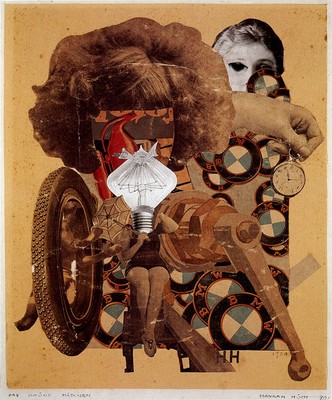A Beautiful World Gone Mad
The Art of Hannah Höch - A Dada Original
What is Dada?
To understand Hannah Höch, you have to understand Dada. World War One left the planet Earth in a state of shock and fear. The number of dead was countless, entire nations devestated for decades to come, battlefields pockmarked with cannon-fire, their air clogged with mustard gas. Those who returned (If lucky - alive) were changed forever. In these trying times, the art world attempts to convey its feelings, mood, and emotions; but how does the Classicalist paint the dead? The Cubist muse over the horror? The Futurist draft the pain and suffering? In a logical world dominated by capitalism, greed, and death, the answer was to embrace the illogical world of life, harmony, and peace.
Dada is such an illogical artform. There exists no standardized style, no classic hallmarks. Their desire to protest, to express their disdain at the world that created such horrors was suficcient enough. Among these Dada, one that rose from the Berlin school, Hannah Höch, would leave her mark on this art form. Hannah's medium of choice changed from year to year, from paintings, to puppets, but in later years adapted the collage as her voice in a sea of death and fear.
Höch's collage contained within it a unique viewpoint - that of a woman. Like many art fields, the Dada movement was relatively light on women and their views, but was more receptive and understanding in a different regard. In The Beautiful Girl, made in 1920, Höch's shift from the war to the current state of affairs is visible as ever. What appears to be an incoherent collapse of women, auto parts, and logos quickly assembles itself into a critical piece. The luxury of the vehicle, its customization, its brand recognition, and its fashion - they all apply to women. There is a general disdain for women, felt all around. During the war, women performed more roles but after the war, returning soldiers came back and took this freedom back.
Hannah Höch's desire was to reveal the men's club that was the world; her work speaks of a silent pain shared.
